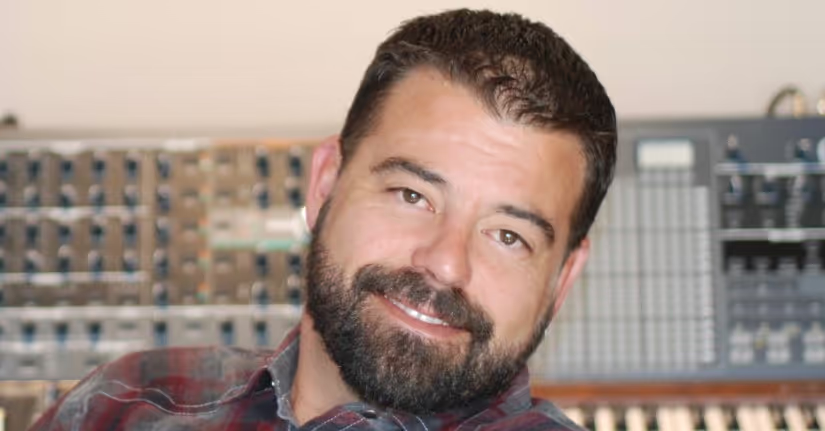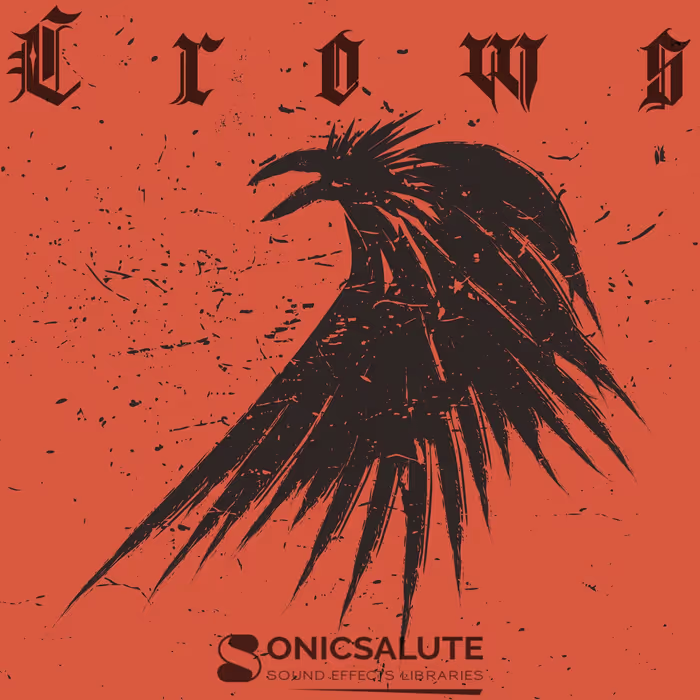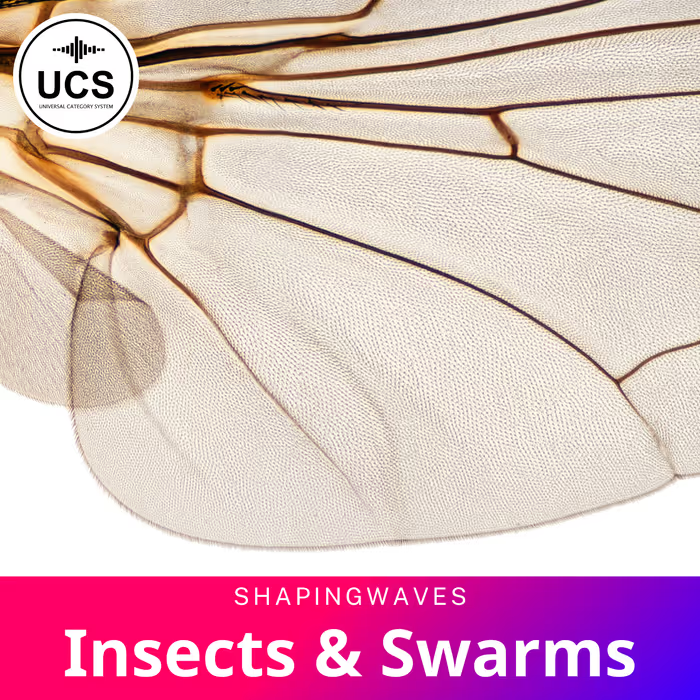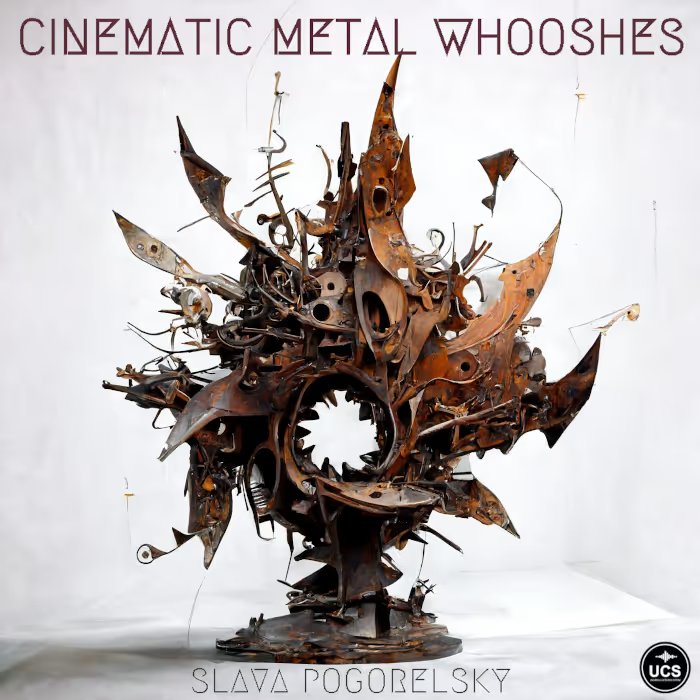DS = Doug Siebum
KS = Kip Smedley
DS: Hi Kip, can you tell us a little bit about your personal story and how you got your start in sound for commercials?
KS: First, thank you for inviting me to chat. I’m a fan and follower of A Sound Effect, and I’m thrilled to be included here. Before we get into it, I should preface by saying that during my time in commercials, I was in a fairly closed workflow bubble. I don’t really know what other advertising sound designers day to day work structure is like. There wasn’t a community water cooler where you would meet up with other sound designers from other houses and chat about tips and tricks. In my 16 years I worked with maybe 4 or 5 other sound designers that came and went. As far as I know there aren’t the hard and fast standards that you see in film and TV work aside from delivery specs. I’m guessing you could ask 10 different sound designers these questions and you would get 10 very different answers. We all kind of made things up as we went along. You pick up tips from friends and articles, the useful ones get added to your bag of tricks, and others you try and forget. As long as it sounds good it’s fair game. For starters, I was brought up using Logic as my DAW. Not really by my choice, but because the studio I was working for mandated it. So the way I personally work is rooted in how I was able to manipulate Logic to suit my needs. Logic was and still is amazing in that way.
In the late 90s, I had big dreams of being in the music biz and making rock records. Straight out of high school, literally 3 days after graduation, I started classes at The Conservatory of Recording Arts and Sciences in Tempe, Arizona. Then off to Hollywood. I spent a few years in the music studio trenches at Track Record, Sony Music Studios, and Private Island Trax. I Started out making coffee, wrapping cables, then session setup and break downs, and moved up to assisting and engineering sessions. Eventually I landed at Machine Head, a music and sound design house specializing in audio for advertising. That’s where I discovered post production and really cut my teeth. I was doing everything from basic PA and tech work around the studios, assisting the composers, engineering the sessions for the live musicians that would come in to play on the commercials, and eventually composing music for the spots.
I remember my first “sound effect gig” very vividly. I had just wrapped a morning session, probably a string quartet or drum session, we were doing a lot of those back then. The studio owner, who at the time was a pretty intimidating guy that didn’t really have much to do with me, as he was usually in with clients while I would be with the composers. There were 2 very distinct camps, the music side and the sound effect side of the company. He asked if I thought I could handle cutting in some foot steps on a spot he was working on, while he took his clients to lunch. I of course said “Sure, No problem, Shoot me the session.” He said “nope, just cut them on my rig.” And he left. His room was very much off limits up to that point. It was a very uncomfortable place to be dropped into. It had very modern furniture, his office chair was a yoga ball, and instead of mouse he used a Wacom tablet pen, which I had never used before. As soon as I sat down and hit play, the computer crashed. I don’t remember what the fix was, but I do remember it took the better part of the lunch meeting for me to get the room fired back up again, figure out where the session lived on his drive, launch it, and find the missing footsteps. I just started cutting the first one in and he walked through the door, clients on his heels. “Done yet?” he asked. I awkwardly got up from the yoga ball, handed him his pen, tried explaining the crash. He cut me off, said something along the lines of “Well that was fruitful.” And excused me from the room. It must not have left that bad of a mark because It wasn’t long after that, maybe a few days that I was given my first spot to design. It was a crazy commercial for Clear Blue Easy, the pregnancy test company. The tag line was “The most sophisticated piece of technology you’ll ever pee on.”
I was doing the sound design, and my colleague Johannes Hammers, a Machine Head staff composer was doing the music. I remember getting notes from the clients after we posted our first pass, asking when we were going to start on the sound effects. My stomach dropped. The producer explained that our sound effects were in the mix already. “Oh, we thought those were temp sound effects that you guys took from Star Wars or something. They’re great! No notes.” The producer took notice, and from that point on I was booked doing sound effects.
DS: What are some of the differences between doing commercials and TV/Film? Is the workflow the same working on a feature as working on a commercial?
“With commercials it really is something completely different every day. From a first pass of a car spot in the morning, to getting notes back on a sonic branding logo after lunch, and then ending the day printing elements to send to the mix for a fast food ad.”
KS: With commercials it really is something completely different every day. From a first pass of a car spot in the morning, to getting notes back on a sonic branding logo after lunch, and then ending the day printing elements to send to the mix for a fast food ad.
For me, there is more workflow freedom in commercials. I don’t use a mixers template session like you do with TV/Films. Each project is so short lived as far as the amount of time you have to work on the spot, and also short length as in the actual duration of the commercial :15, :30, :60, that you can work in ways that would be impossible in TV/Film. Every single sound in a standard :30 second ad can have it’s own channel if you choose. I’m not saying that you would want each footstep on an individual track, but for design work it is pretty luxurious to not have to worry about the track count of the mix template that you’re working in, and to be able to pack on as many plugins, on as many channels as your heart desires.
The trade off is that once it’s approved, you have to organize, label, and print stems (bake in your processing). Those stems are what get mixed. In advertising, you will have already had all your sounds approved at this point, having already done work sessions or rounds of notes back and forth fine tuning with the clients. In TV/Film work the fine tuning and approval doesn’t happen until you’re on the mix stage.
In TV/Film work, you send your whole session to the mix stage, so it needs to be in a compatible format for the mixers to be able to manipulate all aspects of your sounds. The organization and layout happens as you design/edit. Part of your job as an editor is to make the mixers job easy by laying things out in a manner that they can easily find a noise buried in your session, without having to audition every single noise happening at one time. Which for a dense scene can involve dozens of background ambience tracks, playing with car engines, gun shots, tires screeching, people yelling, robots flying, dogs barking, etc.
In my experience, A great way to think about the differences is in track and field terms. Commercials are the sprints – the 100 meter dash. Churn out as much material as fast and flashy as you can. TV would be the 1000 meter event. Moments of flash, but pacing becomes important. You can’t spend the entire week working on the 3 minute chase scene and then leave the rest of the episode naked. Then as soon as you finish the race (episode), you immediately start on the next one. Films would be the marathon. You’ve got to plan, pace yourself, know what deadlines happen when and what needs to be prepped before you get to that point. With TV and film work, there is a very different discipline about maintaining consistency across scenes / reels / episodes / seasons, that doesn’t exist in commercials.
“On a lot of commercial work, every single sound has to pop out of the speakers. Anything you can do to try to get someones attention and hold it.”
On a lot of commercial work, every single sound has to pop out of the speakers. Anything you can do to try to get someones attention and hold it. Dynamics get squashed, things get turned up, music is blaring, and then the whole thing has to sit under wall to wall dialog. You find that the small nuanced details get mowed over by the wall of noise that gets created. So you really have to pick your moments to shine and pick your moments to get out of the way. So you don’t spend as much time on elements that’ll never be heard in the mix. There’s not always time and space for nuance in commercials, where in long-form work, the art is in spaces between the big sound moments.
A drawback of commercials is that it seems to be much less of a team sport than long-form. It’s more of a one man band situation.
Music and Sound Design by Machine Head
Music composed by Gregory James Jenkins, Sound Designers Kip Smedley and Stephen Dewey, Recorded and Mixed by Kip Smedley
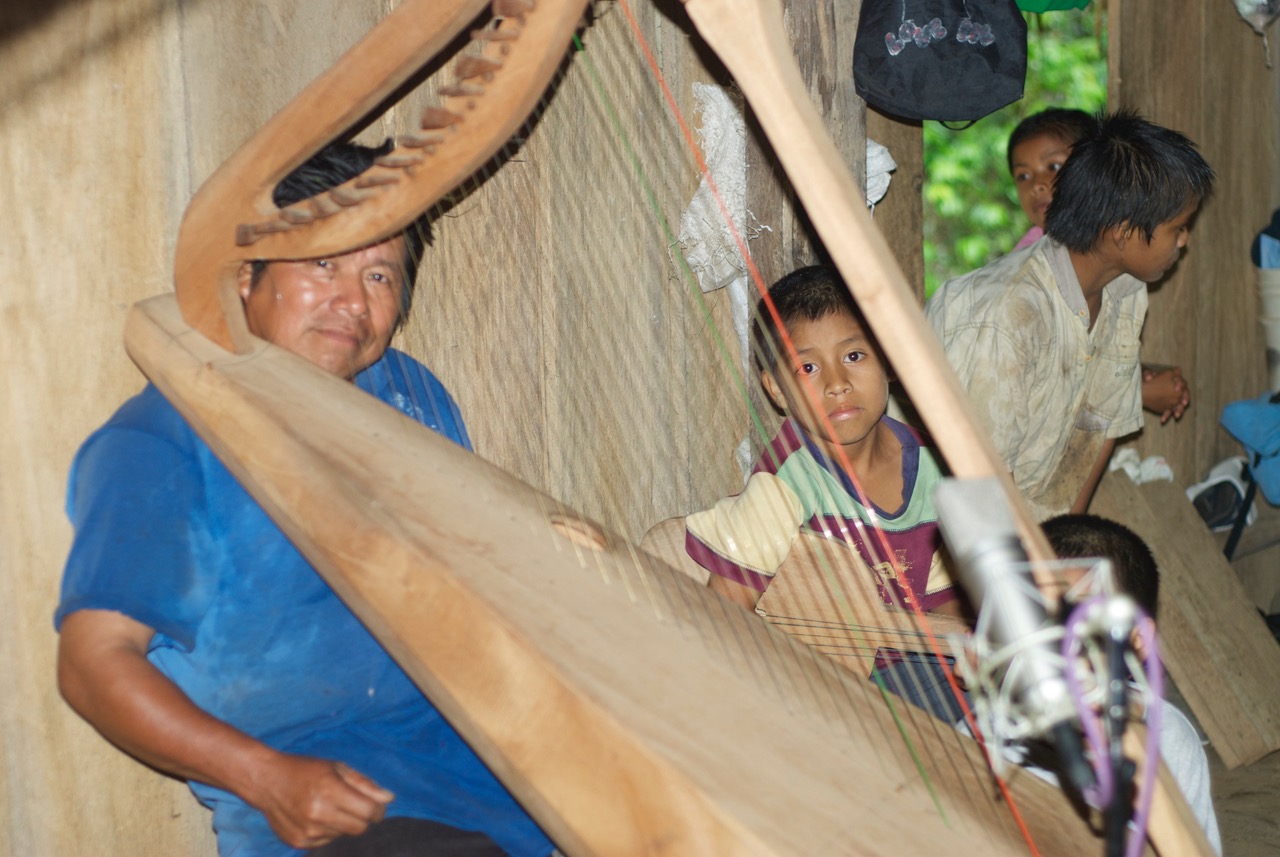
On location in a grass hut deep in the jungles of Belize recording a local musician playing his home made harp.
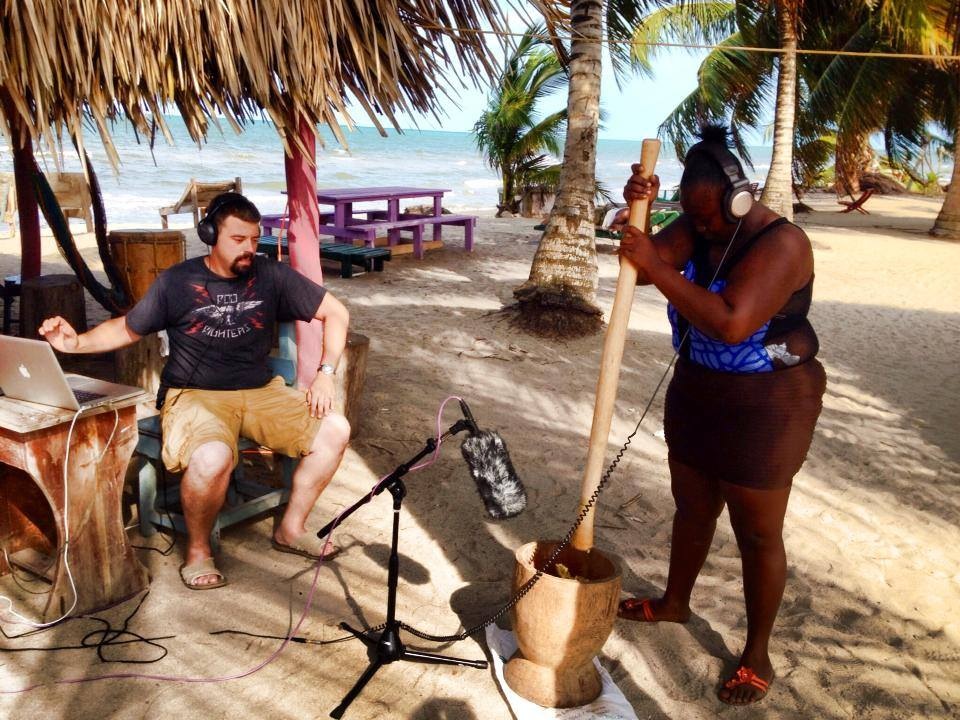
Recording the sounds of smashing plantains In a mortar.
DS: What’s the schedule like? How much time do you get for a typical commercial? Who are all the people that sit in on the session?
KS: A typical spot for me usually consists of a :60 second ad, and then cutdowns to :30 and :15, occasionally there will be a :90 or a 1:20. Normally a solid first pass takes about a day, Some ads less, some more, but the average seems to be about a day. Most of the time, I’ll be sent a link with picture and an AAF or stems. I’ll do a pass, email a link back, they’ll send notes, I’ll address, Another round or 2 of tweaks, and then print and ship the elements to the mix. You can go through several rounds of revisions with clients, hopefully each round you’re just fine tuning so those are quick adjustments, maybe a few hours or so per pass. Once upon a time that meant work sessions at the studio, with creatives, producers, copywriters, and creative directors. You have to deliver the full dog and pony show. They would want the flashing lights of all the outboard gear, the fully stocked fridge of goodies, some studios would have an in house chef for meals and fresh baked snacks.
For me, for the last decade of commercial work has been almost entirely virtual. I’ve done campaigns that lasted years over dozens of spots that I never actually met face to face with anyone else involved.
There are the occasional high budget, high stress, crazy workload gigs that do come in, and those can take weeks of prep work, location recording, days of work sessions, and days to mix.
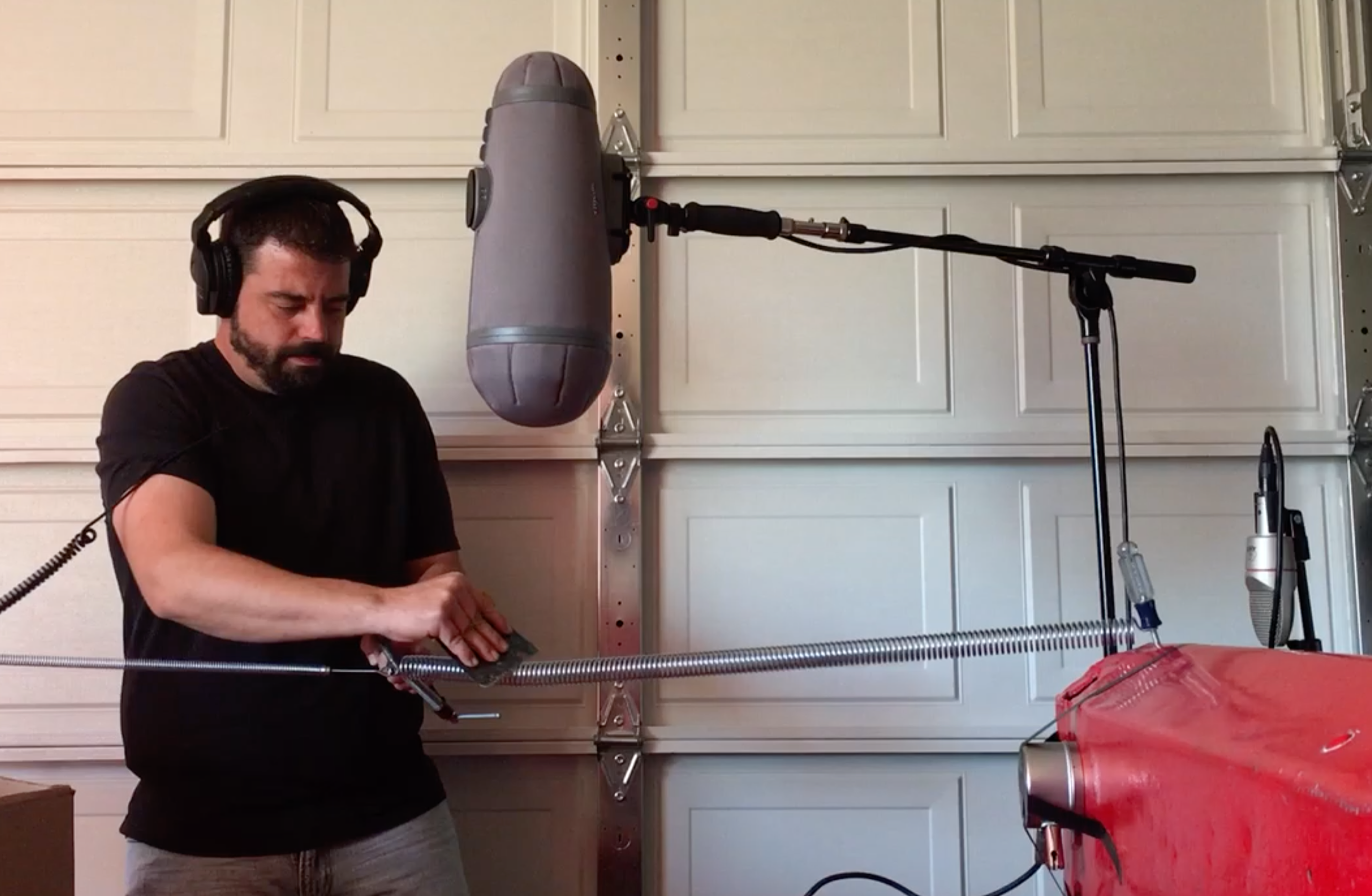
Recording spring scrapes and stretching for a yet to be released Jackie Chan movie.
DS: Are there differences in terminology?
KS: Absolutely. Right off the bat, the term “Sound Designer”. In Film and TV the term is much more specific. A sound designer is the is the person that is creating unique sounds and audio textures by means of recording, programing or manipulation. Sometimes that person is also editing that material to picture, sometimes they are just creating custom libraries that are tailored to the project. There are sound effect editors who typically would be responsible for ingesting the sound designers custom sounds, adding in library effects and keeping the sound synced to picture if there are picture conforms. They may be asked to design sounds as well. Sound effect recordists would be people who are out in the field recording ambiences, explosions, gunshots, cars, sometimes while filming, sometimes just for audio. Foley artists record performances of specific audio movements to picture. Sometimes some or all of those tasks can be assigned to a single person, sometimes you’re on with a full crew and you’re just covering one aspect of the production.
In advertising anyone that adds the sound effects to the spot is referred to as the sound designer. Doesn’t matter if you cut in a library room tone and a door close – Sound Designer. You record yourself walking down a flight of stairs, or crumpling a newspaper – Sound Designer. Or if you spent hours crafting a space ship sound by playing an electric kazoo through a guitar pedal board – Sound Designer.
DS: Do you get paid a salary or project by project?
KS: When I was working for Machine Head I was salary. All my current work is project by project, bouncing from studio to studio as shows come and go.
DS: Do you do a lot of original foley or recording?
“Occasionally we would be given access to one of the vehicles and a driver to have on our own for a day. Haul it to the desert or a race track and have our way with it. Those are the kind of gigs you wish for.”
KS: Tons! There isn’t really time or budget for a full foley workup on ads, so we’ve always just handled that ourselves. That’s also kind of the funnest part of the job. I never leave home without a pocket recorder. I’ve been using a little Sony PCM M10 for years now. It sounds great and is super convenient. A fully packed walk in closet makes an excellent dead room for recording quiet foley sounds. Almost every project gets some custom recordings if at all possible. Also, Just the nature of advertising, You’re selling an object that is brand new to the market, so there’s not pre-recorded library material that will fit. Car companies are pretty particular about engine sounds. We would always try to make it to the filming if possible, to at least gather a reference recording. I can’t list how many times we recorded the actual vehicle, cut it in, and the clients thought it sounded like a lawnmower, so we end up cutting 3 or 4 “alt” versions using other engines, almost every time they pick the v12 Astin Martin beast “yeah, that’s totally what our 4 door boxy hybrid sounds like”. Occasionally we would be given access to one of the vehicles and a driver to have on our own for a day. Haul it to the desert or a race track and have our way with it. Those are the kind of gigs you wish for.
“You just have to hope that the work you do catches the attention of new creatives.”
DS: Are your clients repeat clients?
KS: The hope is that your clients keep coming back, but there is a lot of turnover on the agency side of the industry. Sometimes your clients move up the food chain or move to different agencies who have other designers on speed dial. You just have to hope that the work you do catches the attention of new creatives.
[tweet_box]Kip Smedley shares tips and tricks on doing sound for commercials[/tweet_box]
DS: Are your sessions in stereo, 5.1, or other formats?
KS: Working in commercials we were almost entirely working in stereo, and the mixer would then spread the mix out into 5.1 during or after there was an approved stereo mix. If the spot calls for something specific to be in the surrounds, I’ll send a note or a stem to be placed in the rears.
For my long-form work, everything lately has been in Atmos. Starting from editorial all the way through the final mix. I’m not typically panning things up and down in my room, but you have to make sure you have enough elements in your mix to be spread throughout the expanded sonic stage.
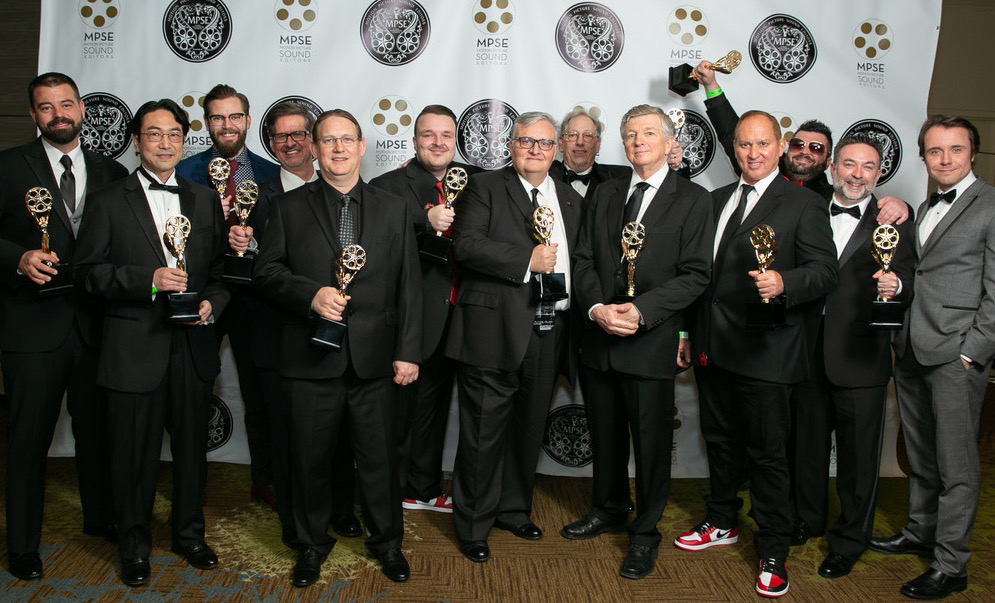
The sound crew for Spider-Man: Into the Spider-Verse
Left to right: Kip Smedley, James Morioka, Ando Johnson, Tony Lamberti, Benjamin Cook, Alec Rubay, Geofff Rubay, Donald Flick, Curt Schulkey, Gary Hecker, Andy Sisul, Chris Aud, Matt Taylor
DS: How did you make the jump from doing commercials to working on features such as Spiderman: Into the Spider-Verse and episodic TV shows such as Ted Lasso?
KS: While the bread and butter of Machine Heads work was commercials, we would occasionally pick up some film, TV and game work. Sometimes clients that you work with on their ads will make a film, and you might be asked to contribute songs or sound effect work. It was through a situation like that where I met supervising sound editor, Geoff Rubay. We had done some songs for a film that he was supervising and we remained friendly for years afterwards. He would occasionally come by our space and talk shop, or if we were working on a short film and his schedule was free, we would have him mix it. There had been light discussion of me jumping onto his crew in the past, but timing and other commitments made that tricky. It was really one of those crazy situations where my schedule had just cleared out and I was hunting for my next gig. I happened to hit him up on just the right day. He was just finishing a project that was running behind and his next project was scheduled to start but his entire team was still in the wrap up phase of the first film. He needed a guy, and I needed a gig. That was into the Spider-Verse.
It was connections I made with the other team members on Spider-Verse that led to me to Warner Brothers to help out on a few film projects. It was again just connections that opened the door for me to get into television. Sound designer Peter Lago had the room right next door to mine on the WB lot, We became friends mostly because we could hear everything the other was working on through the walls. When my film projects had finished and I was packing up my room, I went in to tell him goodbye, He was swamped and needed a hand with the pilot he was working on for the reboot of DC’s Swamp Thing (such a badass show BTW). He asked if I might want to hang around and play in TV for a while. That then led to a few more TV gigs which in turn landed me on Ted Lasso. It really is all about connections. Be friendly. Offer to help. Back it up with the work you do, but if you’re tough to get along with, it’ll be difficult to keep work coming in.
A big thank you to Kip Smedley for sharing some of his wisdom and experience with us. You can find Kip Smedley on IMDb here.

